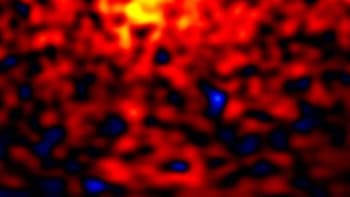The most sensitive dark-matter experiment in the world has failed to find evidence for the mysterious particles that are thought to make up almost one third the Universe. However, the team behind the CDMS II (Cryogenic Dark Matter Search) experiment -- which is four times more sensitive than other dark-matter detectors -- hope to improve the sensitivity of the experiment by another factor of 20 over the next few years (arXiv.org/abs/astro-ph/0405033). The detection of a dark matter particle would represent a major breakthrough in both particle physics and cosmology.

Dark matter was originally proposed by astronomers to explain why galaxies rotate much faster than can be explained by the amount of visible matter they contain. This mysterious form of matter does not emit or absorb electromagnetic radiation — hence the name “dark” — and can only be detected by its gravitational influence on ordinary matter. Black holes and other objects are known to make up some of the dark matter in our galaxy. However, many cosmologists believe that galaxies also contain exotic particles left over from the big bang. These include so-called weakly interacting massive particles (WIMPS) and other particles not included in the Standard Model of particle physics.
The CDMS II experiment is located in a disused iron mine several hundred metres below ground in Soudan, Minnesota. It is necessary to build dark-matter detectors underground to shield them from cosmic rays and background radiation, which can mimic a dark matter signal. WIMPs are extremely difficult to detect because they rarely interact with ordinary matter. The CDMS II team hopes to detect these rare interactions by measuring the charge and vibration produced by particles as they pass through a tower of germanium-silicon detectors maintained at cryogenic temperatures. It should be possible to identify WIMPs because they release less charge than other particles for the same level of vibration.
The first results from CDMS II show with 90% certainty that the interaction rate of a WIMP with a mass of 60 gigaelectronvolts must be less than about one every 25 days per kilogram of detector. According to the CDMS II team, these measurements are at least four times more sensitive than the best previous result, obtained by the EDELWEISS detector in France. The scientists now hope to improve this sensitivity by a factor of 20 or more.
The extension of the Standard Model favoured by most particle theorists — supersymmetry — predicts that WIMPs should be found in the region of parameter space that CDMS II is entering. “The discovery of WIMPs and thus supersymmetry would simultaneously solve the most important problems in particle physics and cosmology,” says Blas Cabrera of Stanford University, one of the spokespersons for CDMS II.



